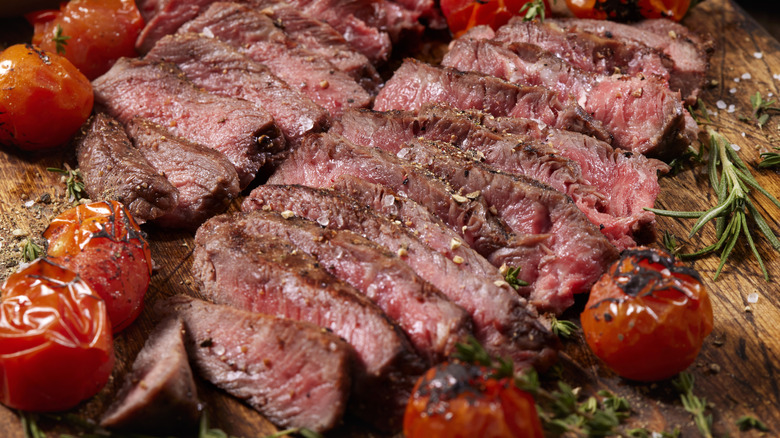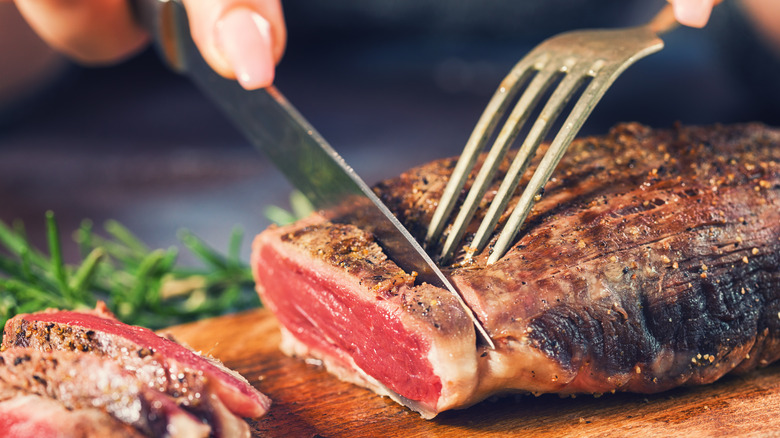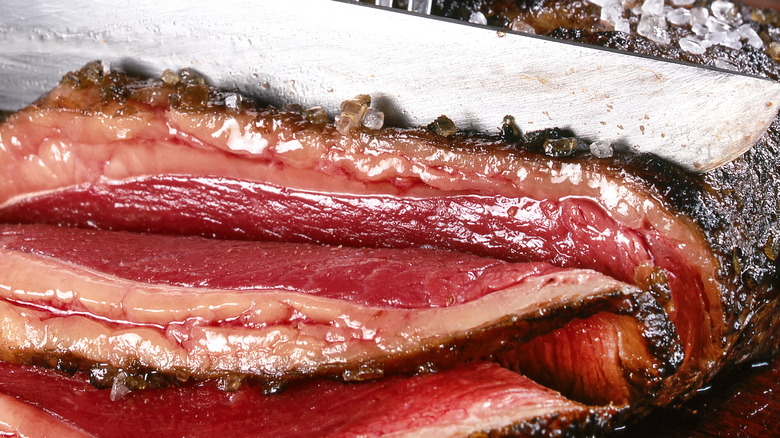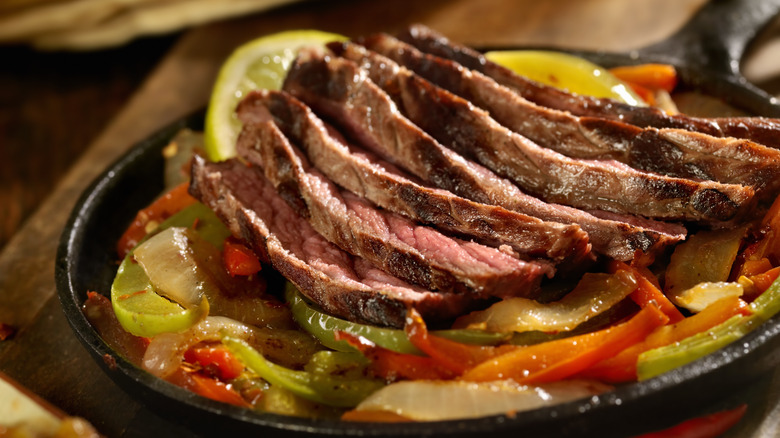How To Cut Flank Steak Against The Grain
Flank steak is one of the humble heroes of the steak world, a reliable and inexpensive cut that can be used for anything from provolone-stuffed rolled flank steak to a sizzling plate of fajitas. Flank steak comes from the lower abdomen of the cow and so tends to be one of the tougher cuts of beef, but if you know how to handle it well, you can make good use of it.
One thing you've probably heard is that you should cut flank steak against the grain to combat its tough texture. This is because flank steak is full of long, thick muscle fibers that can be difficult to break down. Cutting against the grain breaks these fibers and makes the meat easier to chew. Cutting against the grain is generally accepted as standard practice for working with all kinds of meat, not just steak. However, there are exceptions, such as with certain Chinese dishes in which the meat is cut with the grain prior to cooking and cut against the grain after cooking. For flank steak, going against the grain is essential.
Select a sharp knife
When cutting flank steak, be sure to use a sharp chef's knife or carving knife. Sharper is better, as a dull knife will mangle the meat. You probably have a chef's knife at home that you can use; many consider it to be one of only three knives you need in your kitchen arsenal. If you do have access to a carving knife, which would be thinner and longer than a chef's knife and is designed specifically to cut meat, then this is a great bet as well. You can use a fork to keep the steak in place if you wish.
Prepare the flank steak
If possible, choose a flank steak of consistent thickness when shopping at your local grocery store or butcher. This will allow it to cook evenly, which will, in turn, allow it to cut evenly. Flank steaks are usually cooked no more than to medium-rare. Their natural toughness will make them even chewier and more difficult to cut if cooked more than that.
You can also cut flank steak raw, but if you do, be sure to freeze your flank for half an hour before slicing. As flank steak has a low-fat content compared to other cuts of steak, you won't have to do much other preparation, like trimming. You can even cook it straight out of the fridge without bringing it to room temperature first, which will keep it from overcooking.
Make the cut
After you've gotten your knives and prepped your steak, it's time to cut. You first want to isolate which direction the grain is going in. You should see a distinct pattern of thin lines running through your meat: This is the grain. With flank steak and other tougher cuts of meat, the grain tends to be clearly visible, so you shouldn't have trouble locating it.
Instead of cutting parallel to these lines, you want to cut them at a perpendicular angle. For the best size and texture, hold your knife at a 45-degree angle when cutting the steak.
Cook it
When cooking with flank steak, you will need to spend a little more time tenderizing your meat compared to other cuts of beef, like filet mignon. Long, slow braises are ideal for this type of meat to reach the best texture. However, if you have thoroughly tenderized the meat ahead of time, you could go in the opposite direction with a quick, hot grill or sear.
Acid-based marinades will also help break down the tough fibers in a flank steak, as will using a meat tenderizer. Apple cider vinegar, red wine, citrus juice, and other acids will add both flavor and tenderness to a flank steak recipe. The result will be extremely flavorful but not too tough if done correctly.





